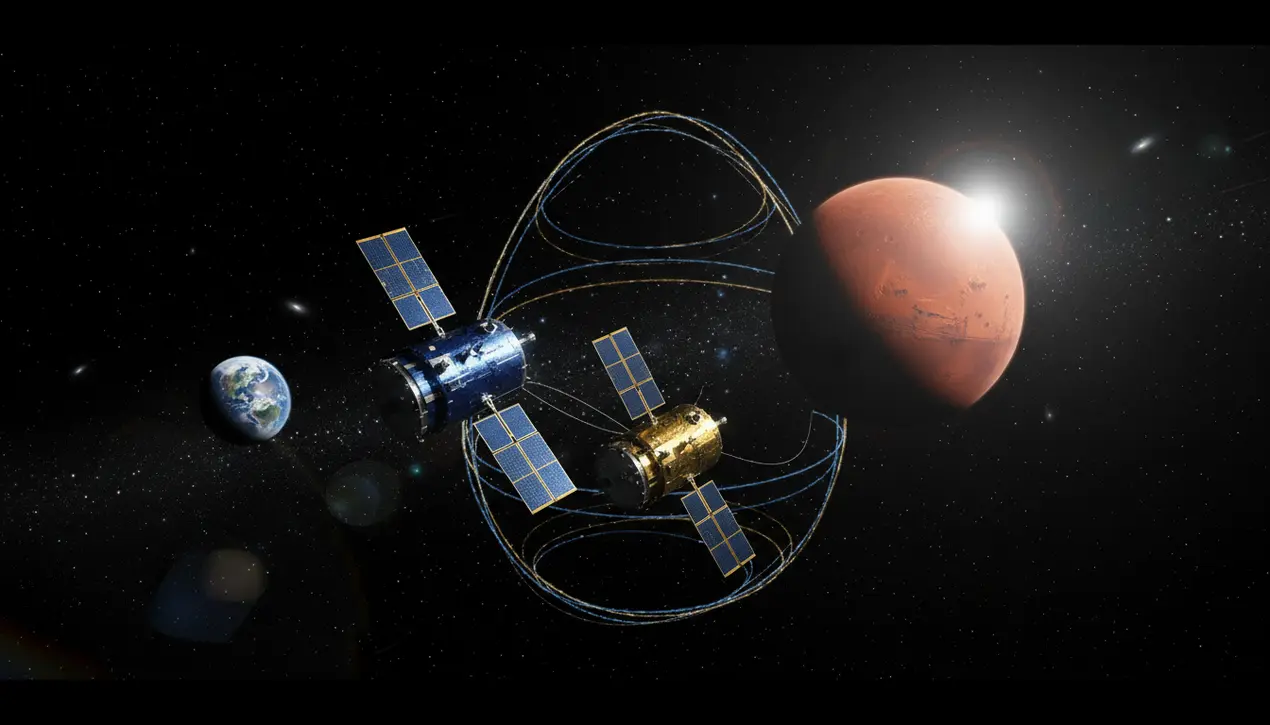
Sciencespace & astronomyNASA Missions
Twin probes launched toward Mars with Easter egg.
TH
Thomas Green
6 hours ago7 min read
In a maneuver that feels ripped from the pages of a science fiction novel, two robotic emissaries, christened 'Blue' and 'Gold' in a nod to a tradition of celestial nomenclature, have successfully broken the surly bonds of Earth and are now on a silent, sun-centric trajectory toward the Red Planet. Their launch marks a significant new chapter in the international quest to unravel the Martian enigma, a multi-national endeavor that sees the United States, through NASA's oversight, and contributions from the European Space Agency, pooling intellectual and technological resources.The probes, expected to achieve orbital insertion in September 2027 after a multi-year cruise through the interplanetary void, are tasked with a mission profile that could fundamentally alter our understanding of Martian geology and climate history. This isn't merely about placing more hardware in orbit; it's a coordinated assault on one of the planet's most enduring mysteries—the fate of its ancient water.By deploying advanced ground-penetrating radar and high-resolution spectrometers, the twin craft will operate in concert, much like a planetary-scale CT scanner, to map subsurface water-ice deposits with unprecedented clarity and analyze the thin Martian atmosphere for traces of gases that could hint at past, or even present, biological activity. The choice of a tandem mission, a strategy reminiscent of the successful Grail lunar orbiters, is a masterstroke of orbital mechanics, allowing for three-dimensional modeling of the Martian subsurface and eliminating the single-point-of-failure risk that has doomed solo missions in the past.This ambitious timeline, set against the backdrop of a 26-month launch window dictated by the celestial dance of Earth and Mars, underscores a renewed global urgency in Martian exploration, with China's Tianwen missions and private entities like SpaceX also setting their sights on the fourth planet from the sun. The 'Easter egg' in the mission's announcement—the evocative naming convention—harks back to a human desire to personify our mechanical explorers, from the Spirit and Opportunity rovers to the Perseverance and Curiosity labs now trundling across the surface.As Blue and Gold cruise through the darkness, their success or failure will hinge on a series of flawless automated maneuvers, most critically the harrowing 'seven minutes of terror' during Martian atmospheric entry. A successful arrival in 2027 would not only provide a treasure trove of data crucial for planning future crewed missions, identifying potential resources for water and fuel, but also solidify an international framework for deep-space collaboration, pushing humanity one step closer to answering the profound question: are we alone in the cosmos, or is Mars a world that once, or still, whispers with the faint echoes of life?.
#Mars mission
#twin probes
#space exploration
#featured
#2027 arrival
Stay Informed. Act Smarter.
Get weekly highlights, major headlines, and expert insights — then put your knowledge to work in our live prediction markets.
Related News
Comments
Loading comments...
© 2025 Outpoll Service LTD. All rights reserved.